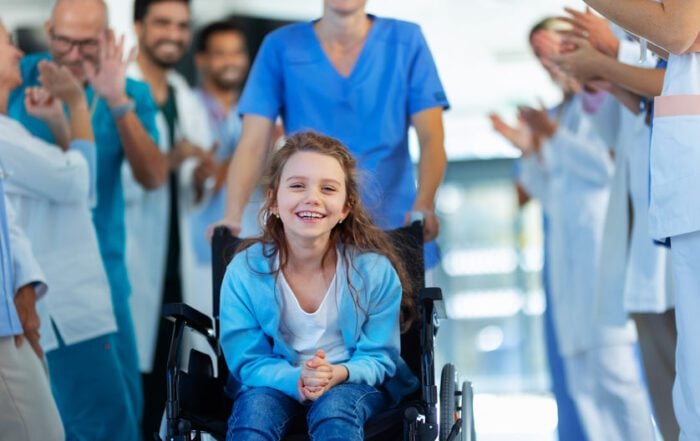Ready For Carpal Tunnel Surgery?
An important channel between the hand and wrist, the carpal tunnel is composed of ligaments, tendons, and bones. The median nerve passes through and branches off to the hand. Some people experience carpal tunnel syndrome (CTS), a narrowing of this channel that irritates the nerve. One of the most common treatments for CTS is carpal tunnel release surgery. This procedure removes cartilage to clear up the compression of the nerve to allow for improved function. Before and after surgery, a physical therapy (PT) assessment helps determine the degree of recovery necessary before resuming normal activities.

Preparing for a PT assessment
The physical therapy evaluation for carpal tunnel surgery is designed to assess the wrist and hand. The therapist can then develop an appropriate treatment plan for the patient. The test thoroughly examines the patient’s strength, range of motion, and sensation. The results help identify the areas that need to be strengthened or rehabilitated. On average, physical therapy and recovery should take 4-6 weeks. Here are some common steps included in the assessment.
Medical history and examination
First, the physical therapist interviews the patient. The interview collects information about the symptoms and severity of the issue. The patient will also be asked about the work and lifestyle activities that involve using the hands, such as typing on the computer or playing musical instruments. The therapist can also develop an occupational therapy (OT) plan to assist the patient further.
What’s your ROM?
When the carpal tunnel is injured, movement can be restricted. Range of motion (ROM) measures a joint’s ability to extend, flex, rotate, and move in multiple directions. During the ROM test, the physical therapist evaluates the patient’s ability to move without pain. Each limitation is recorded and shared with the patient. The therapist can then devise a plan to improve ROM and manage associated pain.
Grip strength test
Was the hand’s grip strength fading before surgery? Poor grip strength is a common result of carpal tunnel. This test measures the force the patient can exert by squeezing a hand dynamometer for a few seconds. The grip strength test will reveal any hand weakness caused by carpal tunnel surgery. Based on the results, the therapist can provide specific grip strength exercises for the patient to work on at home or during PT appointments.
Sensation test
Patients might be surprised to hear that CTS is a neurological disorder. Sensory function refers to the ability of the nerves to send information from the body to the brain and vice versa. In patients with carpal tunnel problems, nerve power and function of the hand can be reduced. During a sensation test, the physical therapist uses an electromyography machine to evaluate the patient’s sense of touch. The machine measures electrical activity in the muscles. A reduced sensation may require additional checks, treatment, or surgery.
What’s next?
The physical therapist may ask the patient to take other special tests for a more thorough assessment. Additional tests may include the phalen test, Tinel’s sign test, x-rays, and electrical and nerve studies. After a thorough evaluation, the physical therapist will work with the patient to develop a treatment and rehabilitation plan.
Get a grip on PT
After carpal tunnel release surgery, the patient will be advised to undergo physical therapy to prevent scar tissue formation. Treatment also restores strength and function to the wrist. The physical therapist may help patients change habits to avoid repeating the issue. During physical therapy, patients perform stretching and strengthening exercises focusing on the hand muscles, wrist, and fingers. The assessment provides a roadmap for physical therapy appointments, helping the patient regain strength and recover quickly.
Recent Posts
ACL Repair: Will You Have Range Of Motion With Your Knee After Recovery & Physical Therapy?
After an ACL injury, ROM can be negatively affected. ACL repair surgery helps restore function, but physical therapy is essential to ROM.
Arthroscopy: What Are The Benefits Of This Minimally Invasive Outpatient Orthopedic Procedure?
Arthroscopy can help diagnose or treat joint conditions. Benefits of the MIS include faster recovery, less pain, and fewer scars.
Posterior Interbody Lumbar Fusion: What Are The Benefits Of PLIF For People With Back Pain?
People with chronic back pain may benefit from posterior interbody lumbar fusion surgery. PLIF can reduce pain and improve stability.
Saying Goodbye To Tonsil Troubles: The Benefits Of Minimally Invasive Tonsillectomy
Chronic tonsilitis or other tonsil troubles can impact health and well-being. A minimally invasive tonsillectomy can reduce infections.








